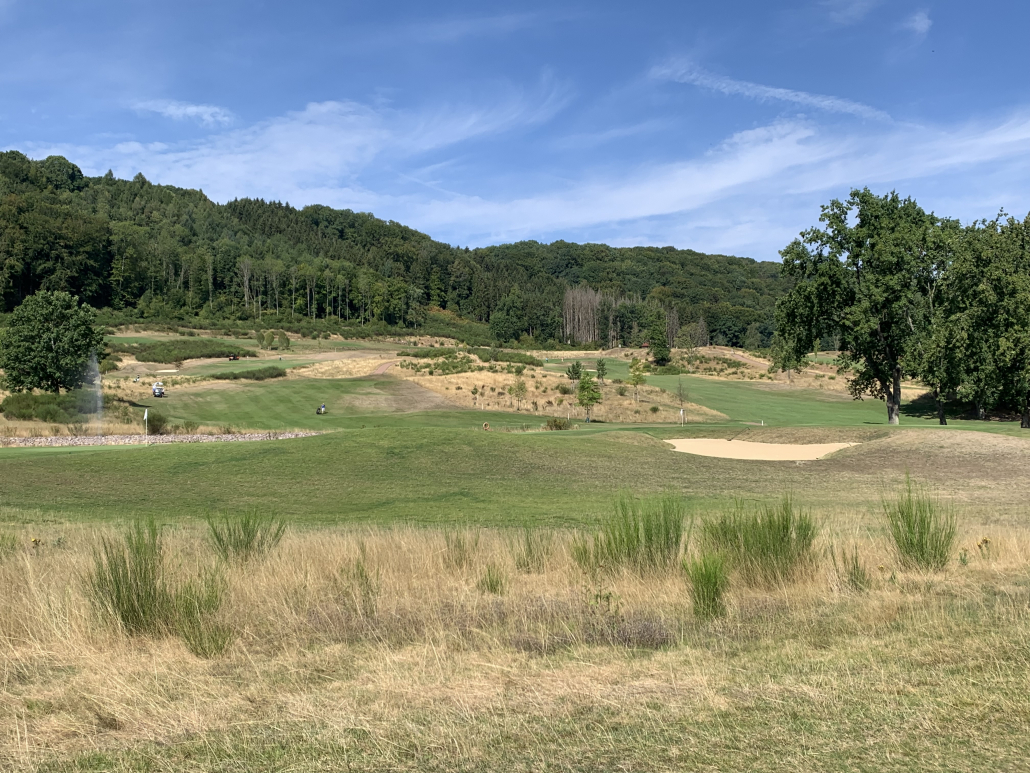Increase resilience to extreme weather conditions by optimising the design and adaptation of golf courses
Change means new opportunities: This also applies to the topic "Climate change and golf course architecture"that is currently occupying many golf courses around the world. The multitude of issues that affect golf course operators and golf course designers alike is undoubtedly a challenge, but one that can be met successfully.
For Thomas Himmel as a golf course designer, the following topics are essential:
Drought and water reduction: Golf courses can be designed or optimised so that they use as little water as possible and at the same time offer optimum water absorption and storage. Reseeding with the right grasses on fairways and greens supports this process.
Extreme precipitation: The correct design of a golf course enables first-class drainage and less erosion. This eliminates high repair costs for bunkers and paths. Subsequent optimisation of existing golf courses is also possible.
Energy saving and carbon footprint: The larger the areas that need to be mowed, raked, fertilised or irrigated, the higher the energy consumption and the larger the carbon footprint. Future-orientated systems are designed to reduce energy and resource consumption, which also reduces carbon emissions.
Cost increase: Whether prices for sand, sprinklers or pipes - cost increases mean that budgets for refurbishments and new builds have to be adjusted. A customised, individual design allows you to keep costs under control.
Human resources: The labour shortage in the golf course sector remains a problem, especially as the effects of climate change often mean additional work, particularly in the area of extreme weather conditions. By taking the right measures in the area of course design, you can reduce labour requirements without sacrificing quality.
Resilient golf courses are attractive and adapt to climate change. A resilient, sustainable golf course looks different from a top golf course 20 years ago, but does not lose any of its quality or attractiveness.
Finesse instead of length
The topic golfcourse length plays a prominent role. Studies by the R&A and USGA show that the majority of golf courses of the future will deviate from the current trend towards longer and longer courses, as the ever-increasing surface area will outstrip the cost of water, fertiliser and labour. More finesse in greens, interesting green surrounds and strategically placed individual hazards such as trees can easily provide an equal or even greater challenge, but are significantly more expensive than the current trend and more resource-efficient.
Area reduction
Reducing the playing and irrigation area is also one of the approaches to intelligent water management, which is made up of several factors. After a detailed analysis of the local conditions and the expected precipitation situation in the future, supplemented by the expected stricter regulation of groundwater and a move away from the use of potable water for irrigation, water management must be customised for each course. The removal of mowing and irrigation areas around the tees, for example, ensures better visibility, especially during dry periods. Even in zones away from the game, this saves water and makes work easier while maintaining an attractive appearance with different grasses or meadows.
Reduction of playing areas with fewer and more strategically optimised bunkers


Emergency storage for periods of drought
On most golf courses, the installation of Intermediate or emergency storage is advisable in which large quantities of water are stored for periods of drought. Storage ponds of more than 100.000 m³ storage capacitiy are now being built in continental Europe. These can be designed as visually less attractive technical reservoirs outside the classic playing area so that they have little dilution area due to their great depth, but can also be designed as reservoir areas integrated into the game. Here, the networking of several smaller ponds is also an option if an extremely large emergency reservoir cannot be integrated well visually and strategically.
Attractive storage ponds integrated into the game
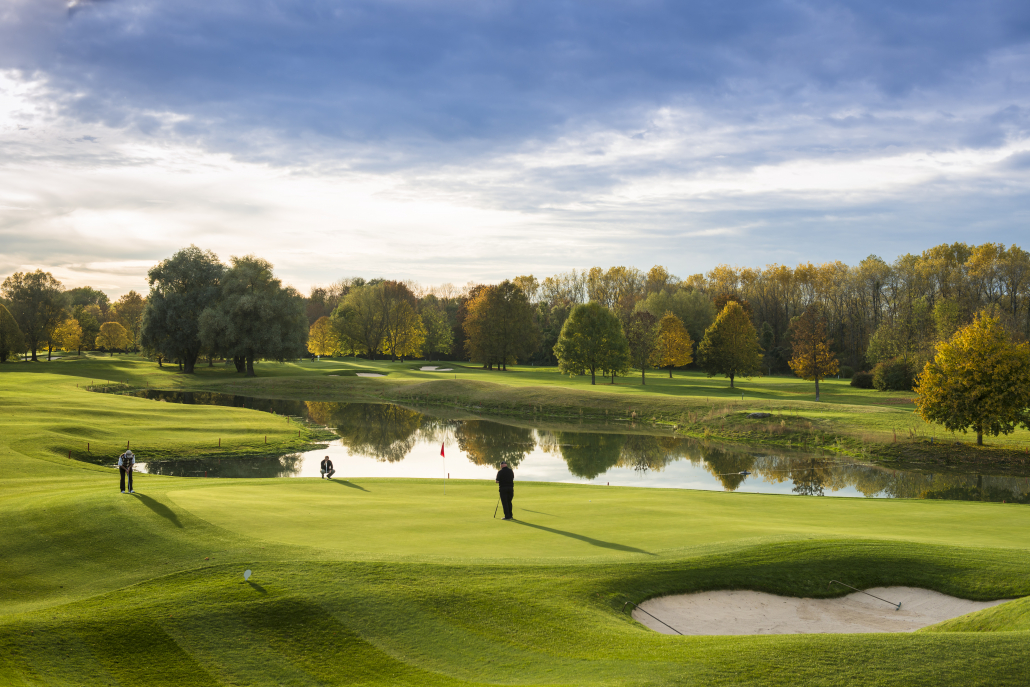
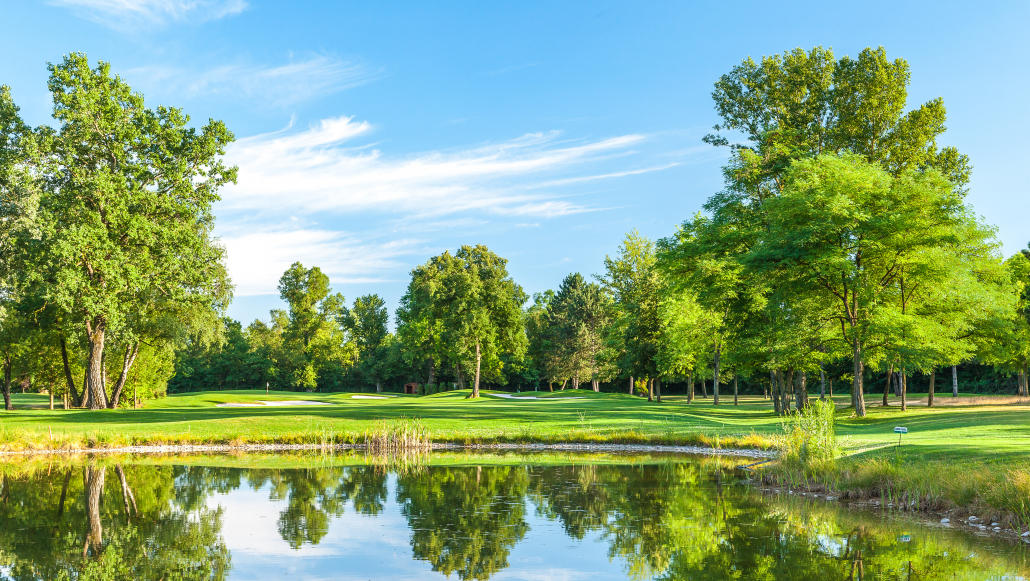

Less attractive storage pond outside the fairways
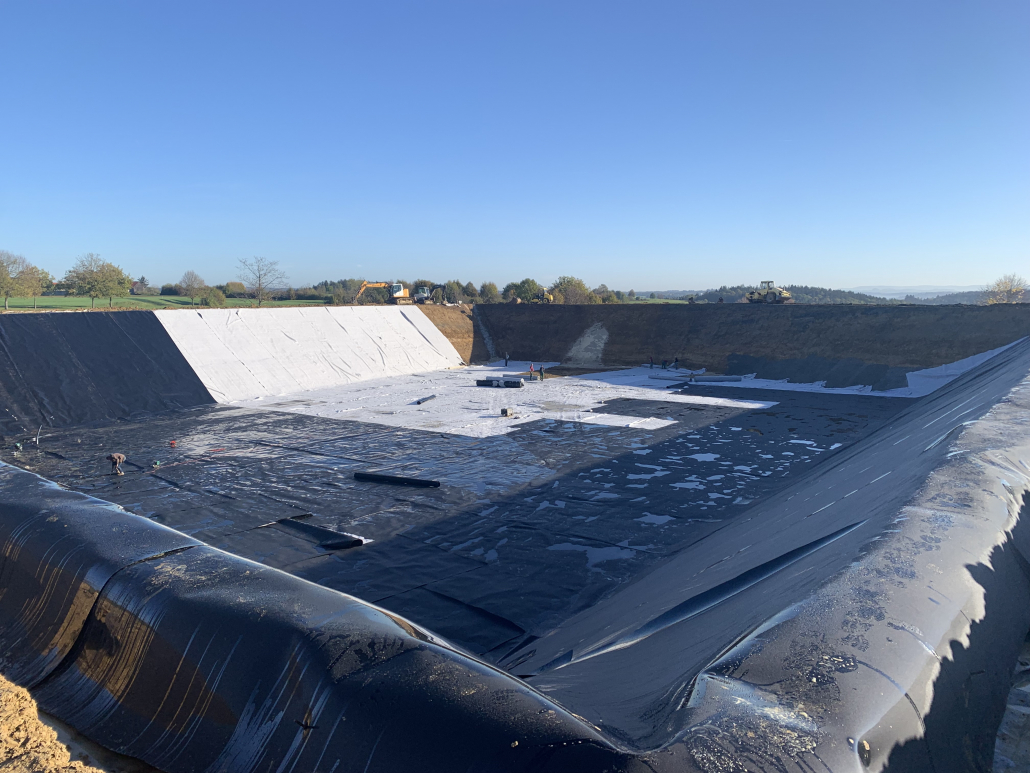
Ecological design of pond edges as a contribution to nature
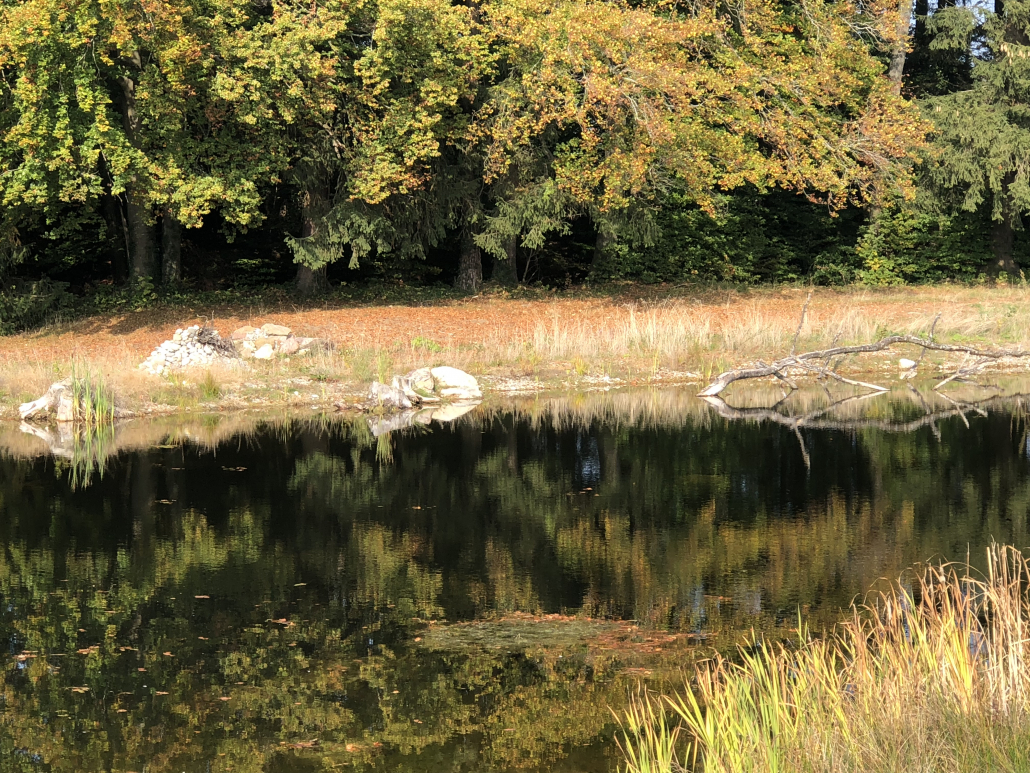
Denken Sie an starken Regen bei Bunkern
The bunker design of golf courses is becoming more and more of an issue, especially during heavy rainfall and flooding. The design of bunkers as well as their size and number is particularly relevant for sustainable locations. Investing in stabilisation layers in the bunker to prevent gravel and sand from mixing and clogging the drainage is costly, but makes it easier to play and prevents major erosion damage, especially in areas that are increasingly affected by particularly strong storms.
Reducing the size of bunkers is also becoming an issue on more and more golf courses and here it is the task of the golf course designer to find an alternative for bunkers that is both visually and playably interesting. However, both are possible, so expensive bunker renovations are not the only way to deal with storms.
Bunker damage as a result of increasing extreme weather events leads to restrictions, costs and permanent quality deficiencies.
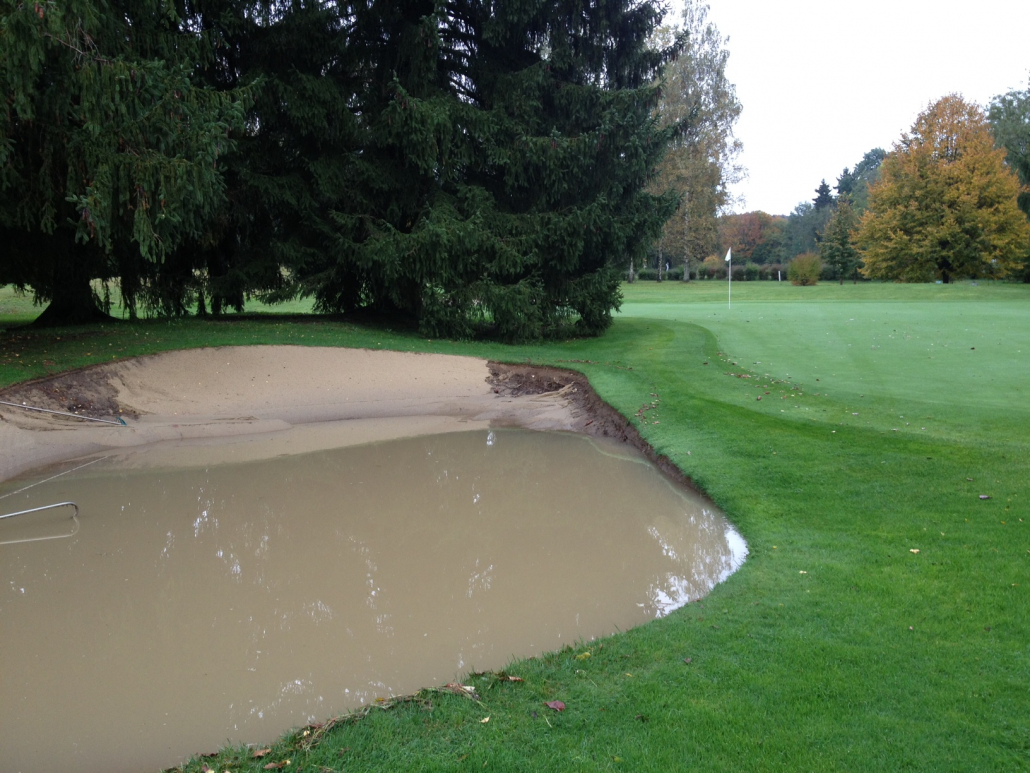
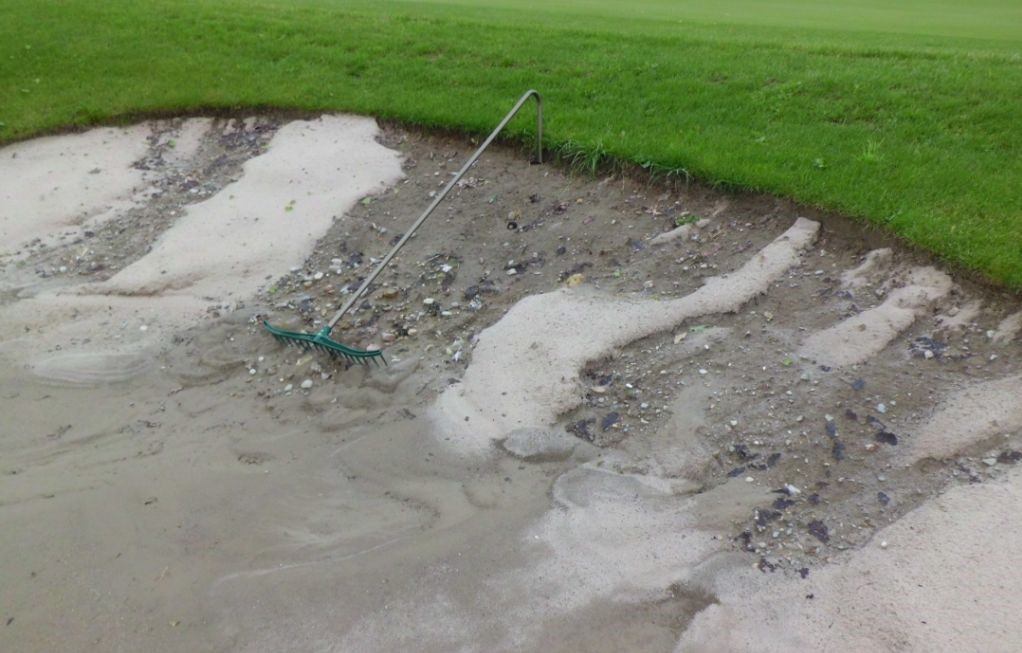
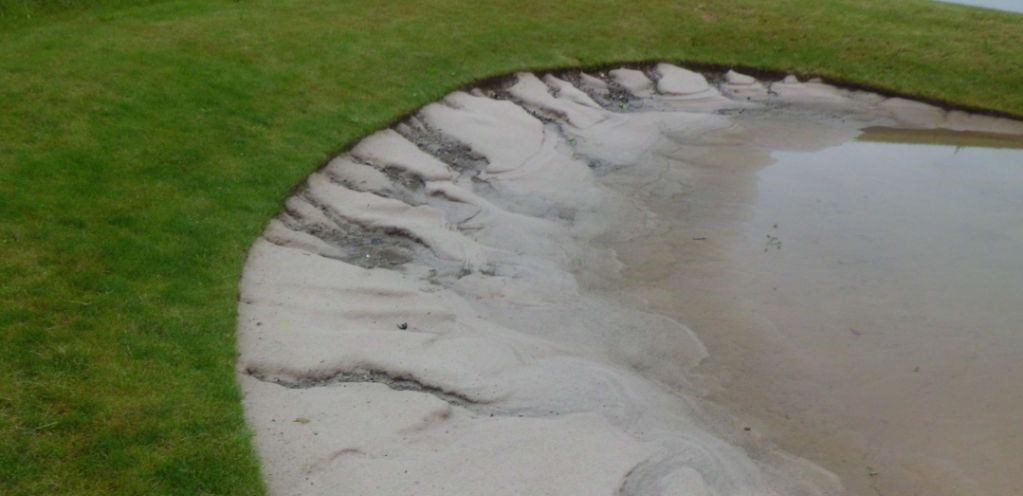
Bunker damage as a result of increasing extreme weather events leads to restrictions, costs and permanent quality deficiencies.
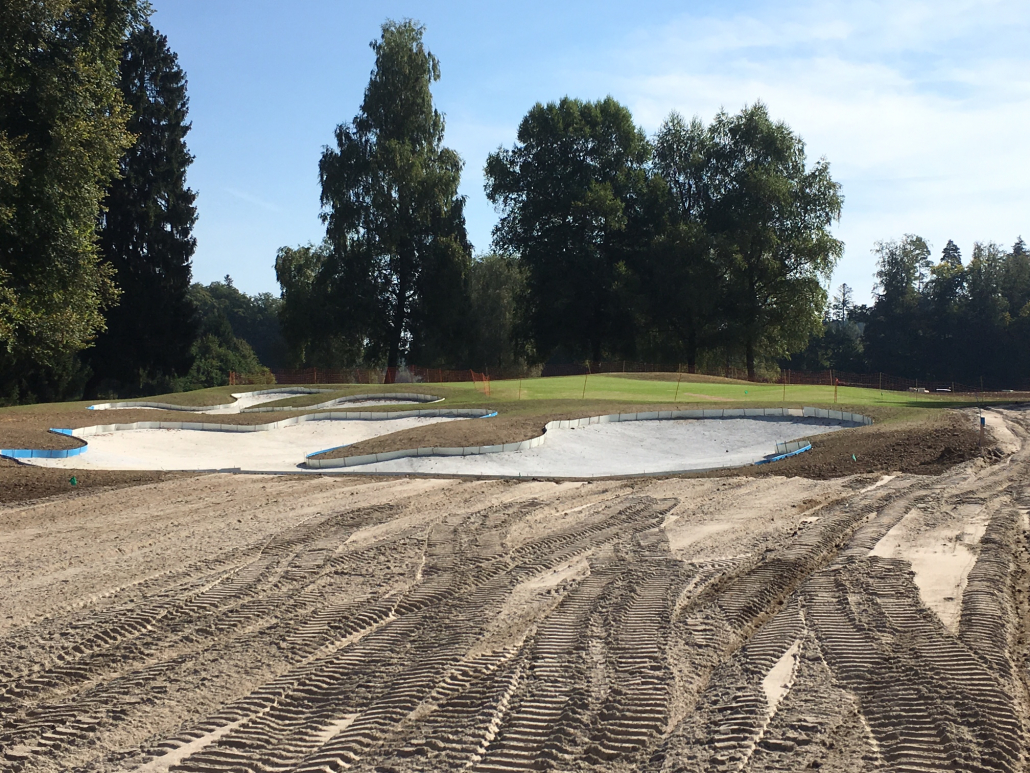

Fewer bunkers can be part of the solution, but should be professionally supervised to avoid a loss of quality in design, appearance and strategy for the golf course.
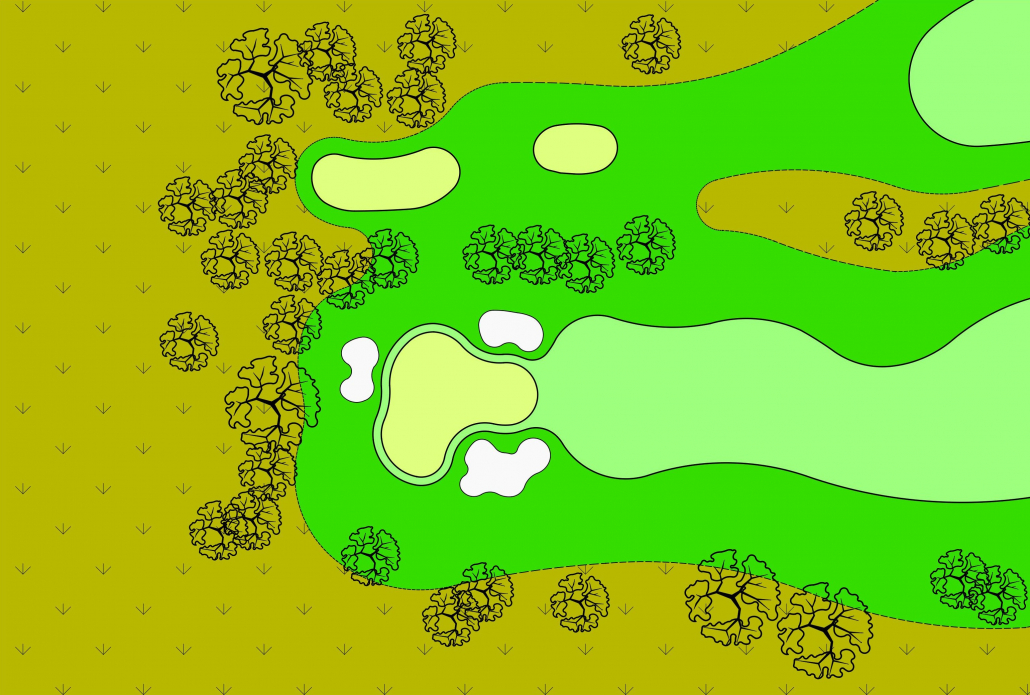
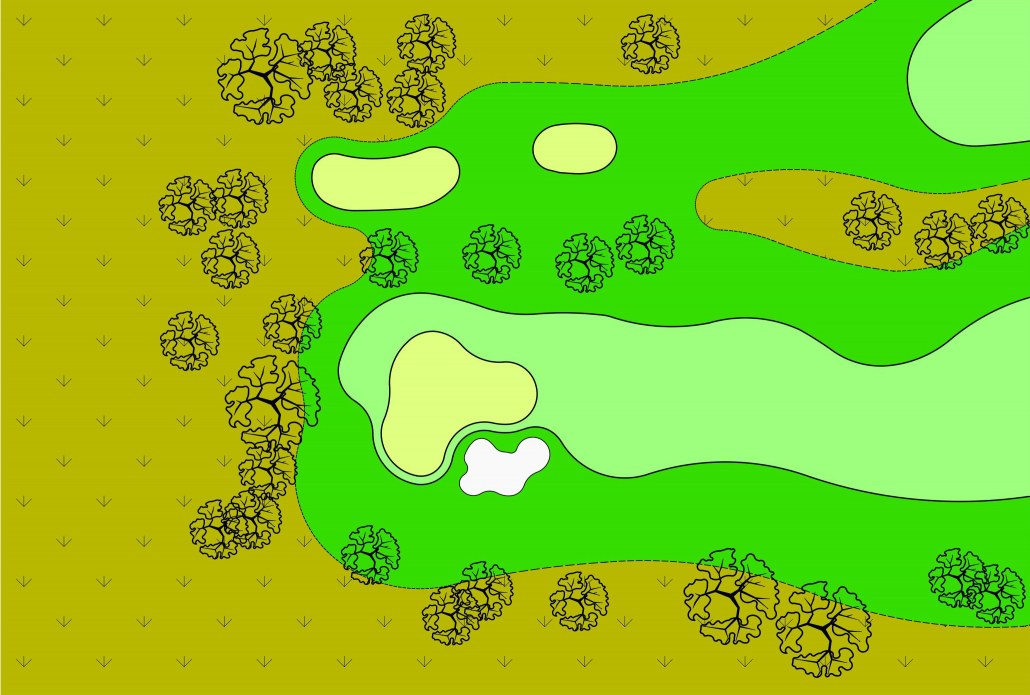
Design adjustments in floodplains
At the same time, golf courses of the future will also play a role in flood concepts. Some golf courses are used as floodplains for smaller rivers and streams. The design of the holes must therefore be such that elevated greens and tees, a proper fairway design or inconspicuous small dams minimise damage to the golf course in the event of flooding.
Almost annual flooding of a golf course in the German Alps
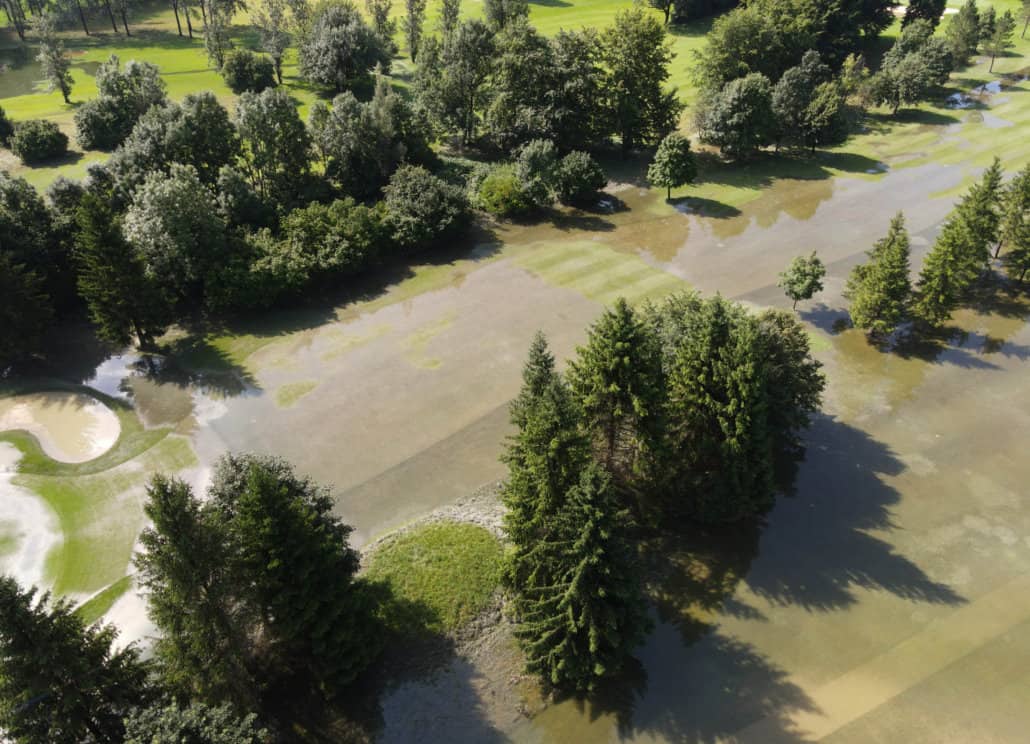
Von Hochwasser betroffener Golfplatz im Großraum München im Überschwemmungsgebiet eines Flusses
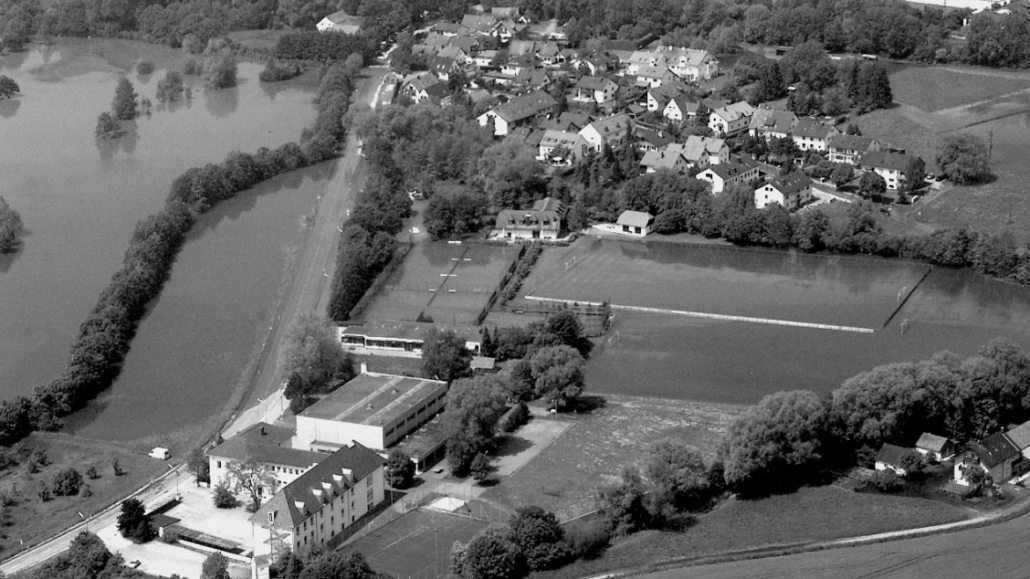
Redesign with some greens raised by more than 120cm and elevated bunkers that blend attractively into the landscape.

Establish the resilience of golf courses
The effects of climate change, as unpleasant as they currently are for each individual golf course, they are not automatically only associated with negative consequences. Rather, it is a matter of critically analysing the existing design of the golf course and examining the resilience of the facility and its future viability. Adjustments can then be made in individual steps and at the same time combined with an improvement of existing design weaknesses. An attractive golf course that is less susceptible to weather extremes and whose maintenance is less resource-intensive (and therefore less expensive) is a positive goal that members are happy to support.
Poor design can lead to serious consequences.
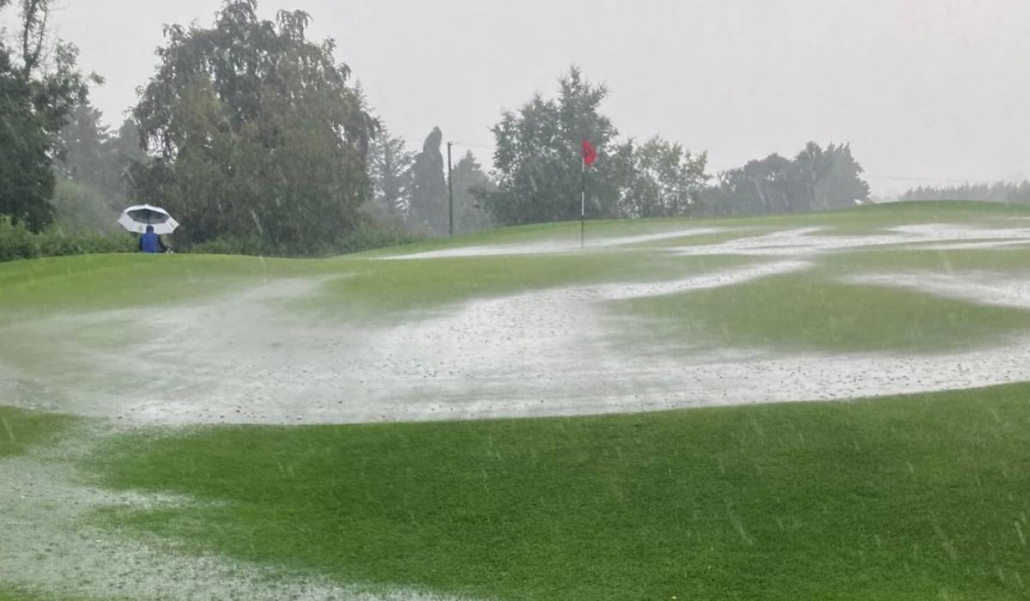
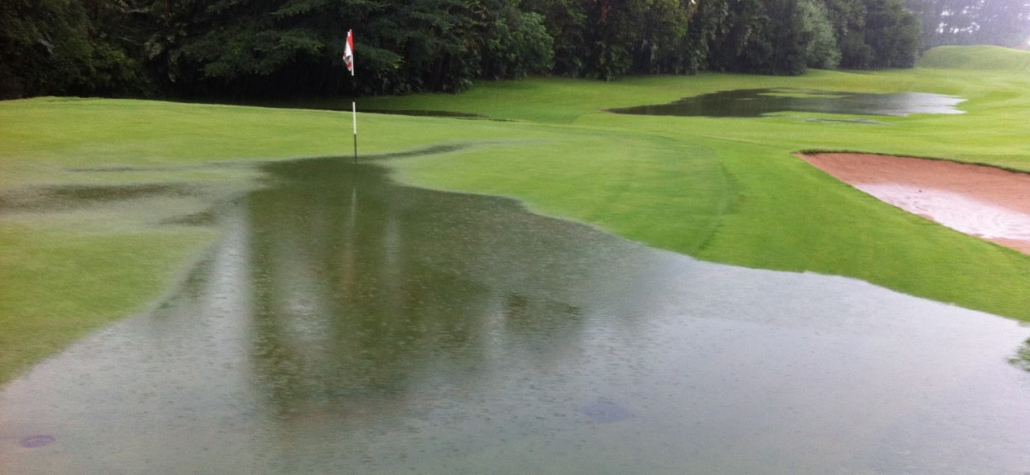
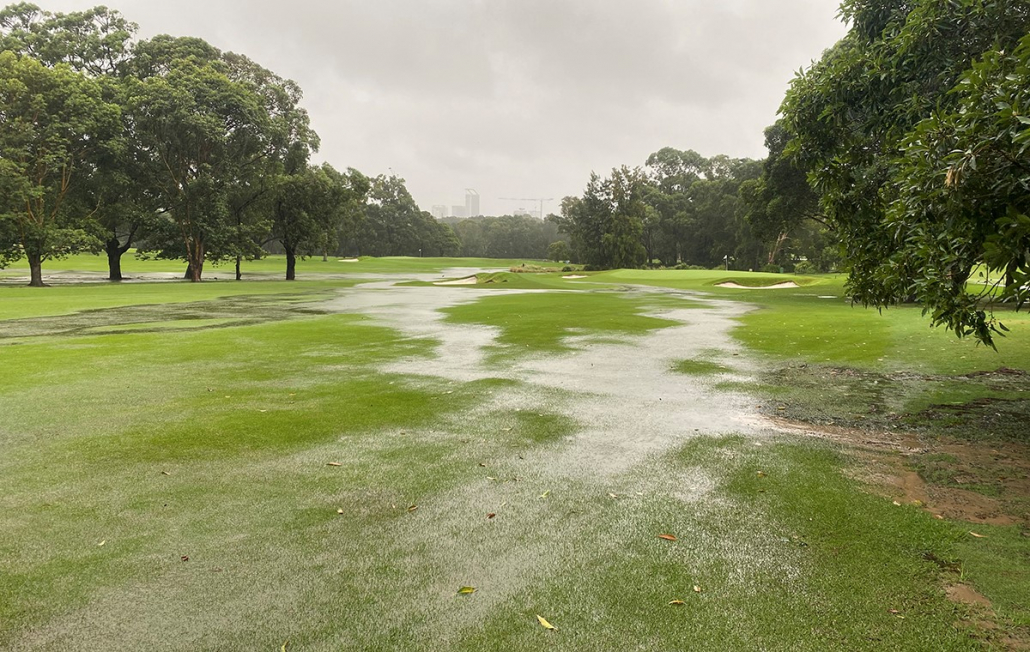
Persistent drought with recurring longer dry periods can also lead to massive damage
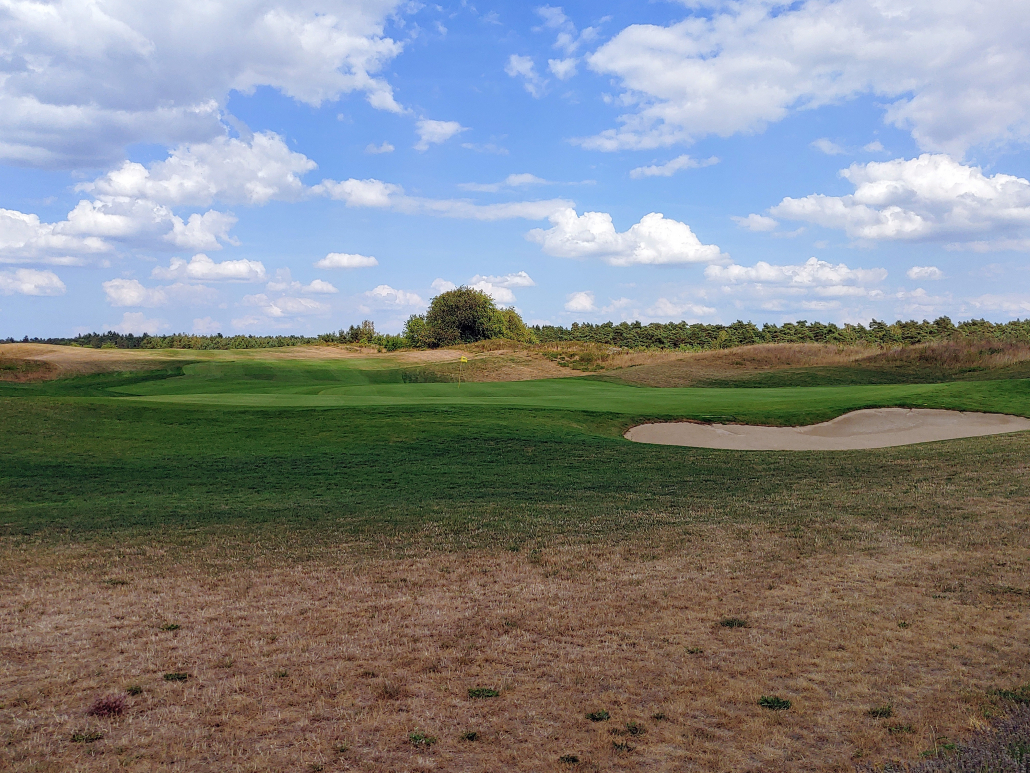
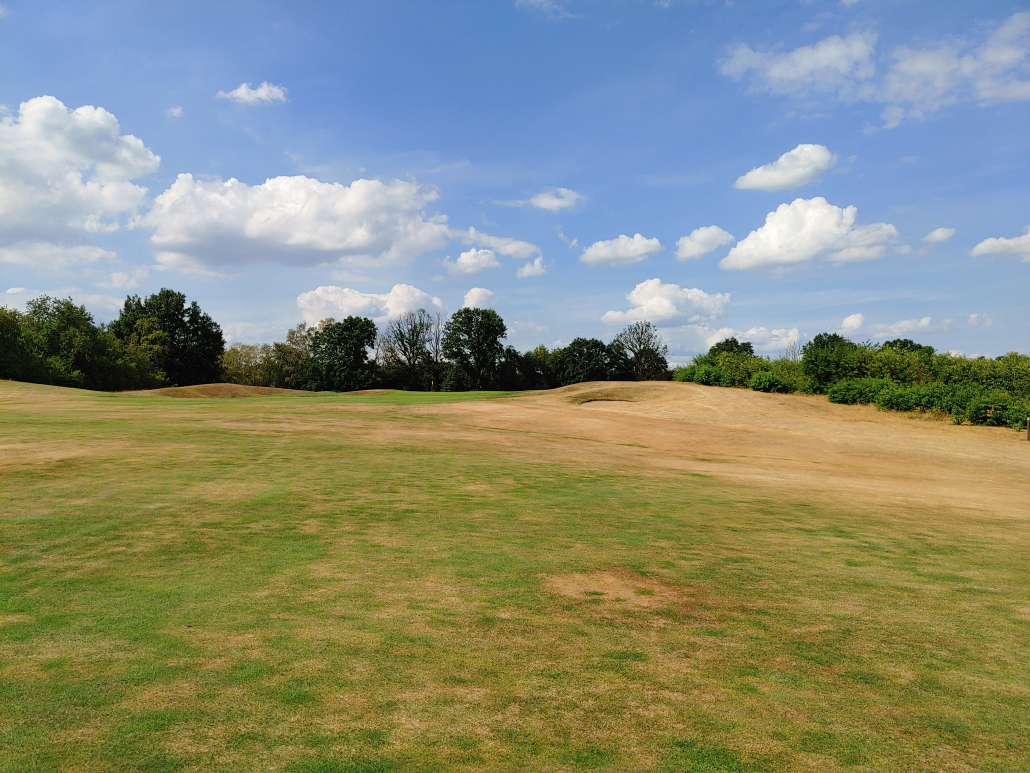
Intelligent path construction
The argument of long working hours is also often put forward by clubs and greenkeepers in the area of paths. The increasing amount of heavy rainfall on golf courses means that greenkeepers have to spend more time repairing damage to paths. Therefore, when creating or renovating paths, care must be taken to ensure that they are not particularly susceptible to erosion due to their design, structure or the materials used.
Damage to golf courses often occurs as a result of poor design, construction or choice of materials.
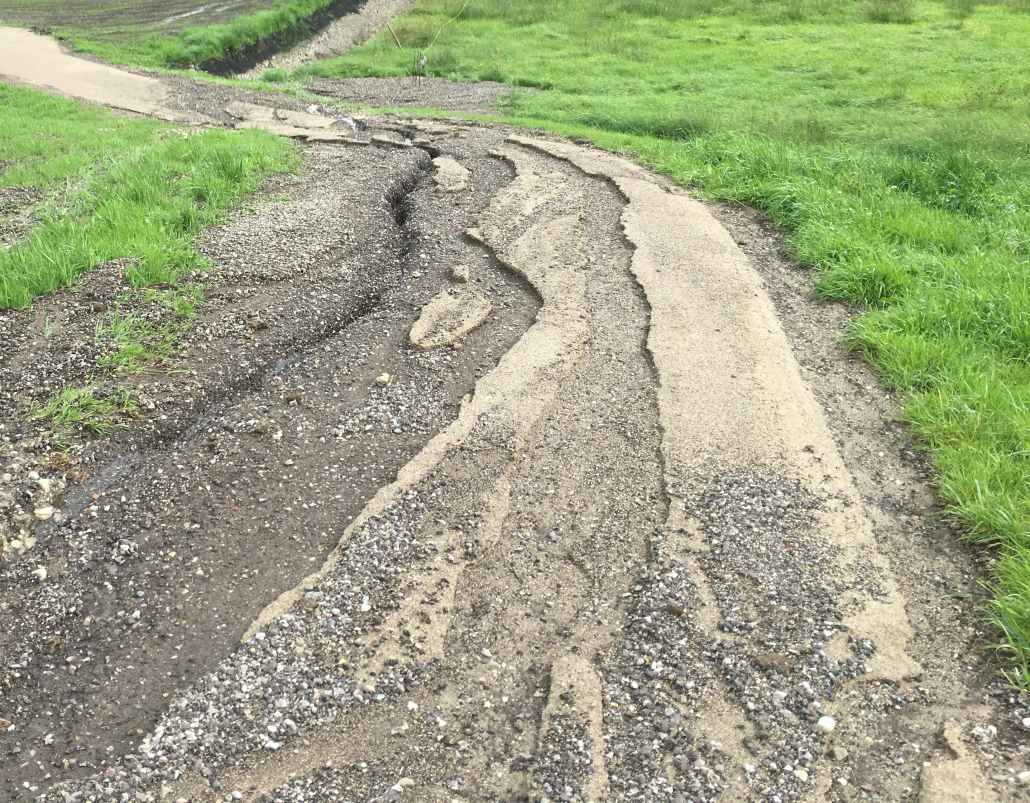
Repeated extreme events can cause considerable damage to golf course paths.
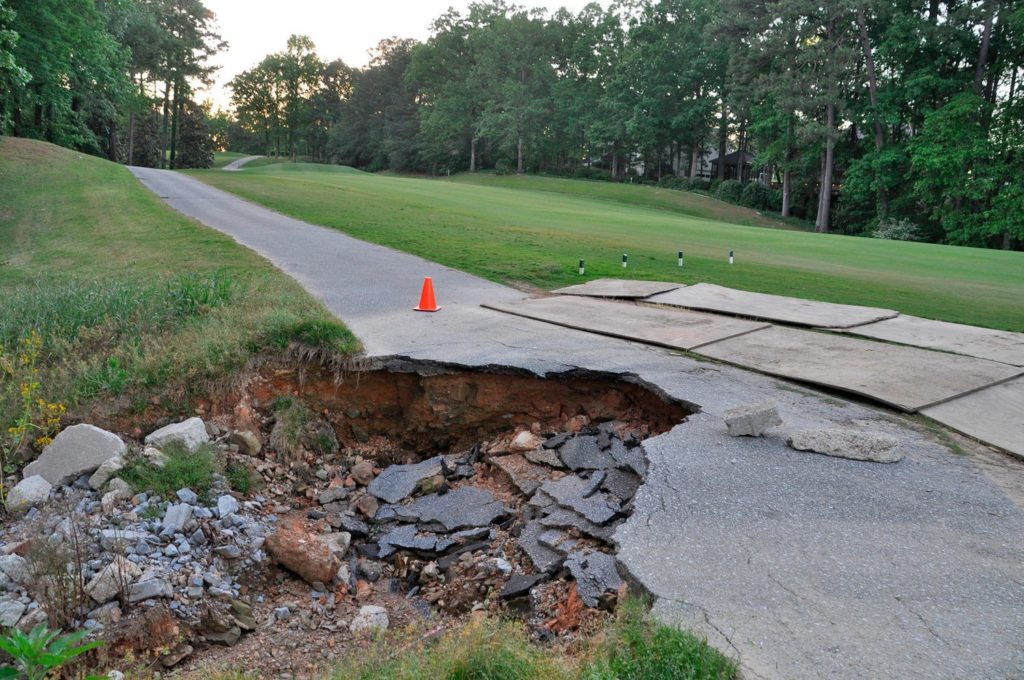
Example of a well-designed and well-built path.
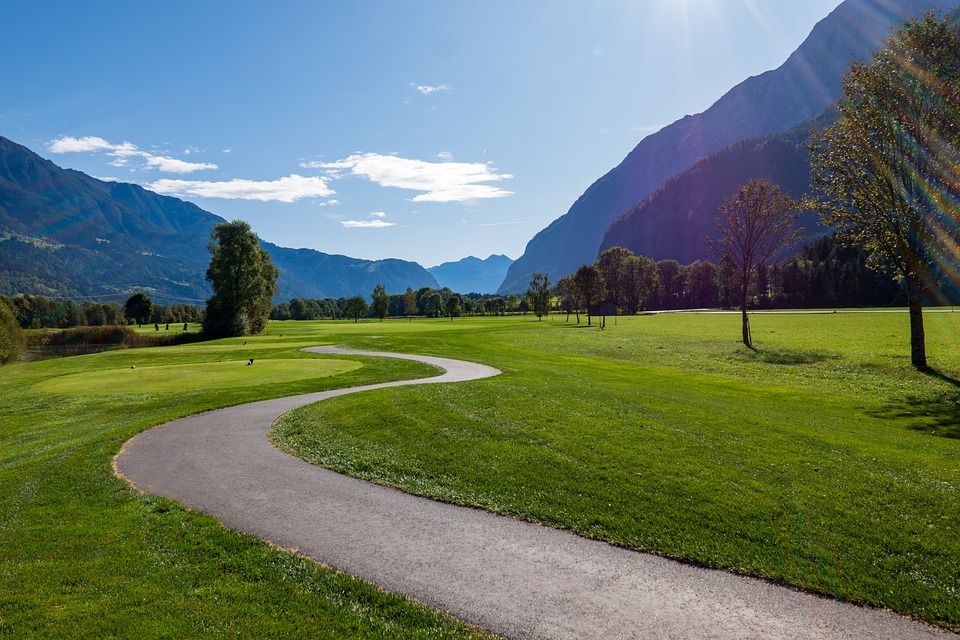
Service water creates independence
The integration of sewage or process water is playing an increasingly important role in the redesign of golf courses. The utilisation of service water from residential areas, the reprocessing of drainage and process water from its own golf course and the connection to sewage water plants often requires a higher initial investment in technology and depends on the location of the golf course, but ensures independence in terms of water supply. The right golf course design ensures from the outset that drainage water from car parks and rainwater from roofs is optimally integrated.
But even with existing systems, the examination of alternative water supplies - be it through the use of rainwater and drainage water, sewage water, own process water as an additional supply, water from roofs or other paved areas, as well as the redesign of golf course areas to optimise the use of rainwater and drainage water.
Customised concepts matter
Every concept needs a suitable system. We help you find the right design with appropriate advice.
Copies seldom fulfil the set goal. Taylor made facilities that are sustainable, resource-conserving, economical and fun must be the goal.








